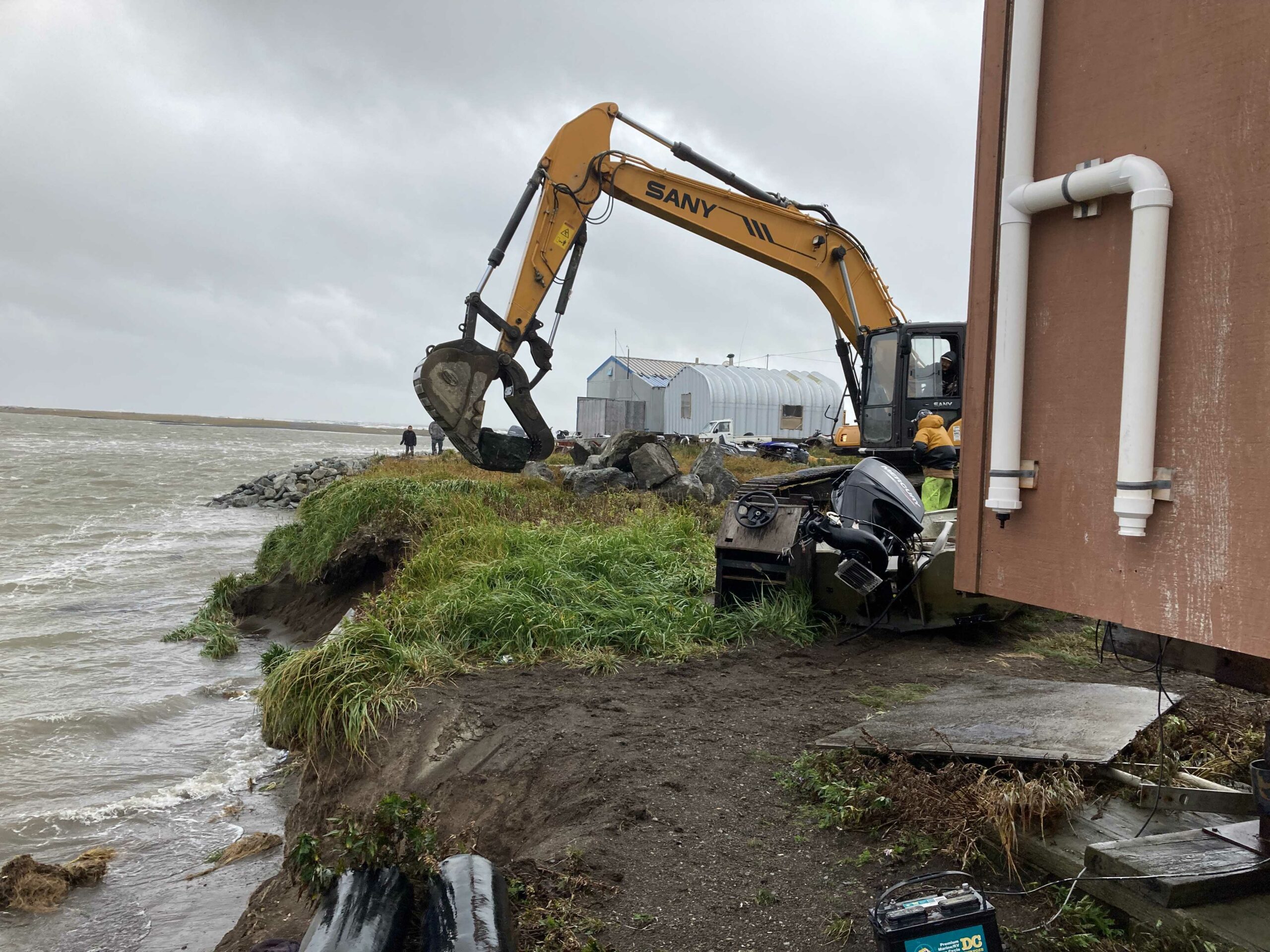
Bill Tracey Sr. has lived in the North Slope community of Point Lay for more than 50 years. In that time he’s watched thawing permafrost transform the landscape. Lakes the community depended on for fresh water disappeared into the spongy tundra. Roads are sinking without solid ground to support them.
The unstable ground also destroyed the village’s piped water and sewage system, first installed in the early 1990s. Tracey said freeze-thaw cycles bent the pipes so much, they look like “a roller coaster.” About two-thirds of the system is unusable today.
“Sixty-five to 70 percent of it is abandoned now. And we’re putting everybody on holding tanks,” Tracey said.
Those separate holding tanks store water and sewage for a household. Tracey said it’s hard to keep sewage tanks emptied and water tanks filled, especially because many homes are crowded, due to the region’s chronic housing shortage.
“Our houses have two or three generations living in them. And that water tank is empty almost every two days,” Tracey said.
A new report from the Alaska Native Tribal Health Consortium in partnership with NOAA estimates that rural Alaska communities need more than $4 billion over the next 50 years to address the devastating impacts of human-caused climate change on local infrastructure.
Point Lay is just one example. Erosion along the Kuskokwim River is threatening McGrath’s powerhouse and landfill. Thawing permafrost in Quinhagak may soon crack the foundation under the village’s health clinic and laundry facility.
Rural communities need at least $80 million (in 2019 dollars) more annually over the next ten years to address major infrastructure challenges like these, the report finds. That includes improvements to storm and flood protections, stabilizing building and home foundations, and in some cases, relocating entire communities threatened by severe erosion.
It calls on the federal government to create a dedicated pot of money to cover the funding gap.
“The magnitude of this, as climate change continues to accelerate, is going to multiply faster than we could respond,” said Jackie Schaeffer, director of climate initiatives for ANTHC. “What we’re trying to do is look at ways to protect people, and allow them the flexibility and access to resources when they need it.”
The report says state and federal agencies should think more proactively about addressing climate change in rural Alaska. Schaeffer says governments should invest in more resilient infrastructure now to avoid bigger, more expensive disasters in the future.
For example, she said, investing in housing with adjustable foundations that can be more easily moved could save money down the line if a village needs to relocate.
“Right now we don’t have that,” she said. “We’re having to either tear down houses or relocate them. And that’s very, very expensive in rural Alaska.”
In addition to the $80 million funding gap, the report says, what money is available is difficult to access. Federal programs to help communities adapt to climate change are scattered across multiple agencies. And funding often requires time-consuming grant applications which are a challenge for small communities without dedicated staff.
Schaeffer argues that funds should be distributed based on the level of environmental risk a community is facing — not its ability to write grants.
“It’s inequitable. It’s not fair to put that burden on small tribes just because they’re small,” she said.
In Point Lay, Tracey said, people are already stretched trying to meet their subsistence needs and make sure basic village services are taken care of.
“You make phone calls all day long to different agencies,” Tracey said. “When you’re fighting a disaster you really don’t have the time to make a phone call and say, ‘hey, I need help.’ The help has to be pre-planned so it’s ready to move in.”
Schaeffer said while Alaska is on the front lines of climate change today, climate-related infrastructure challenges are going to be a major problem nationwide. She hopes, if government agencies can develop better ways to respond to climate change in Alaska, that the state can serve as a model for addressing the issue nationwide.
Kavitha George is Alaska Public Media’s climate change reporter. Reach her at kgeorge@alaskapublic.org. Read more about Kavithahere.





